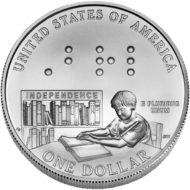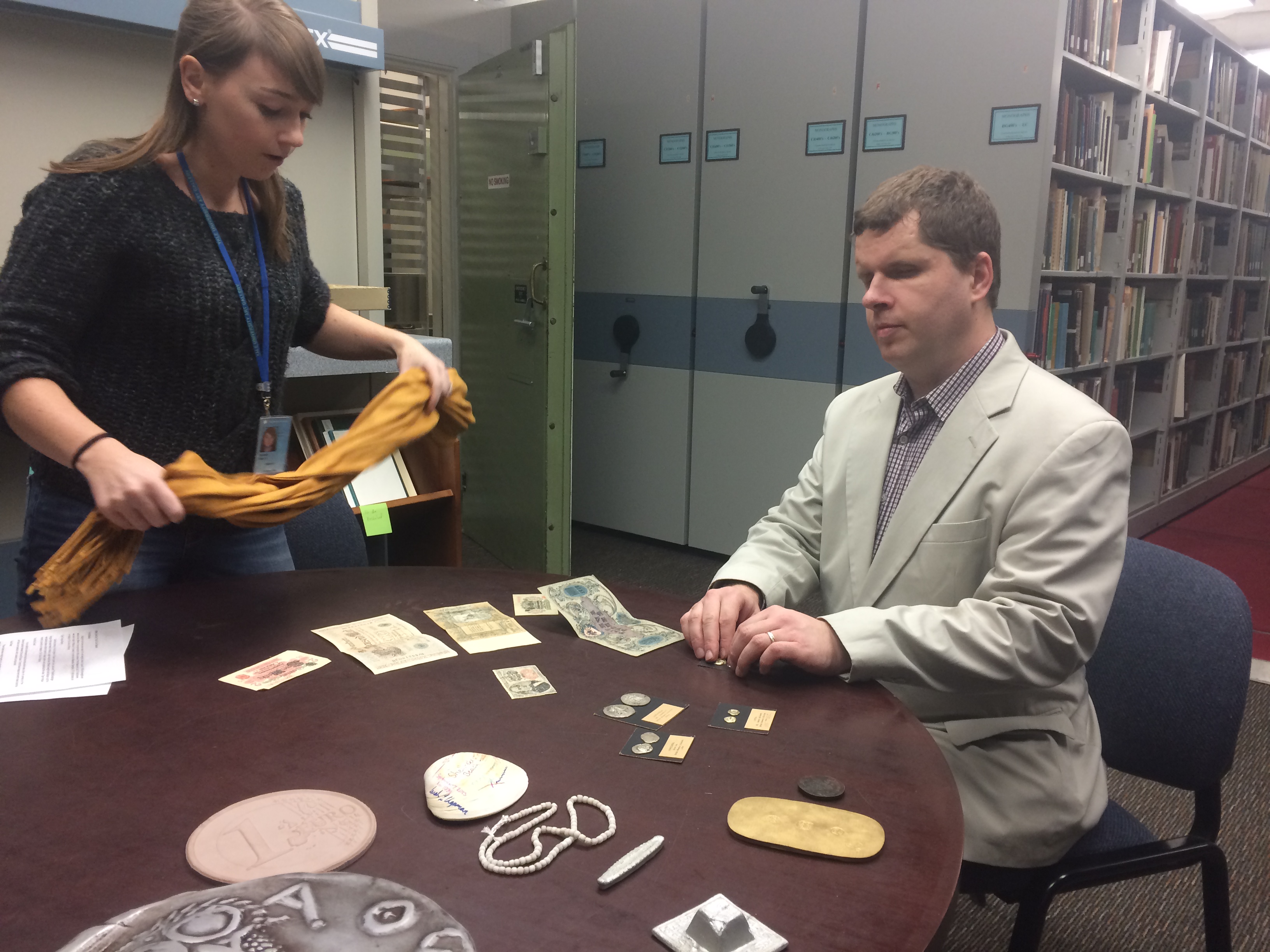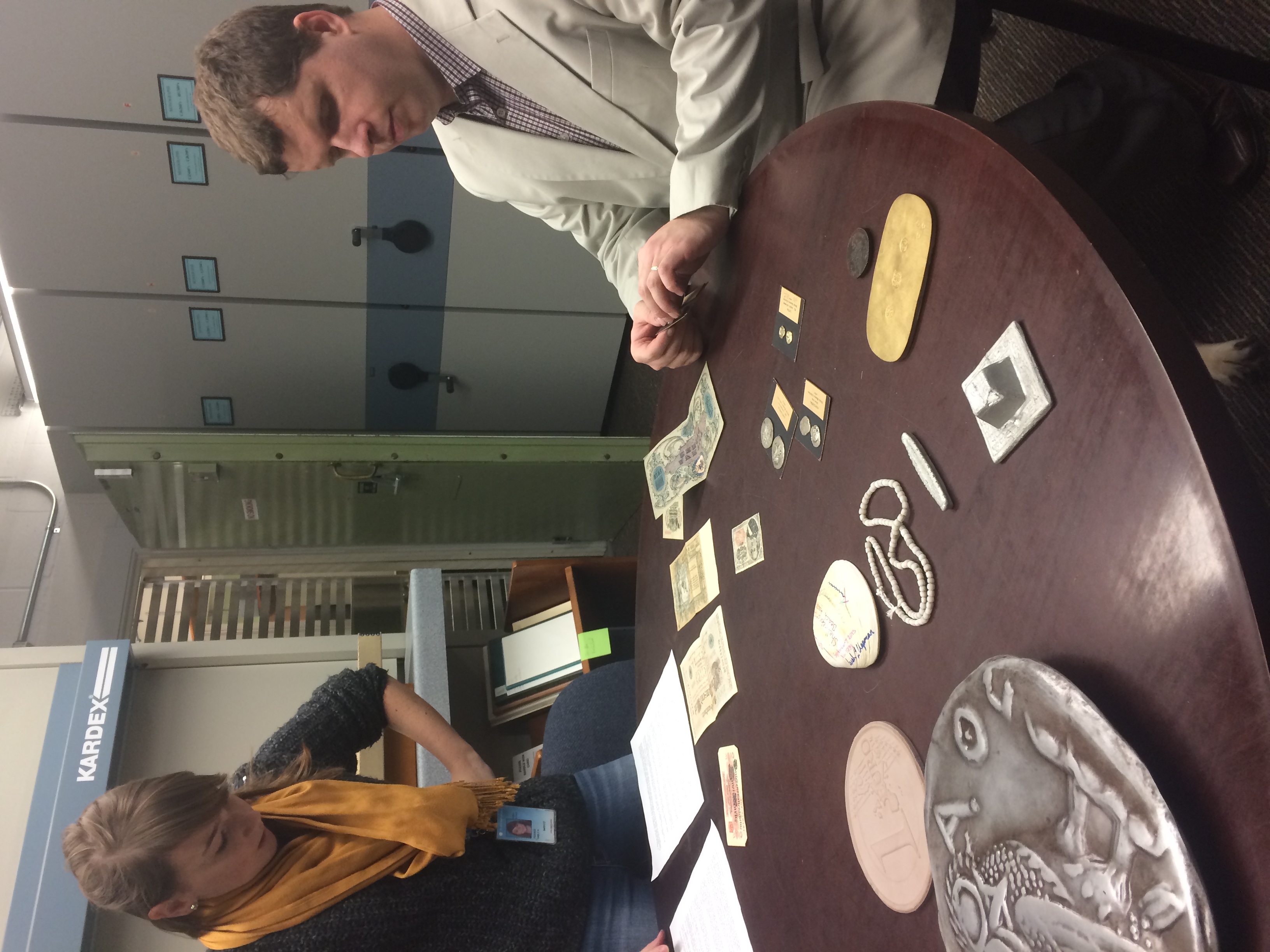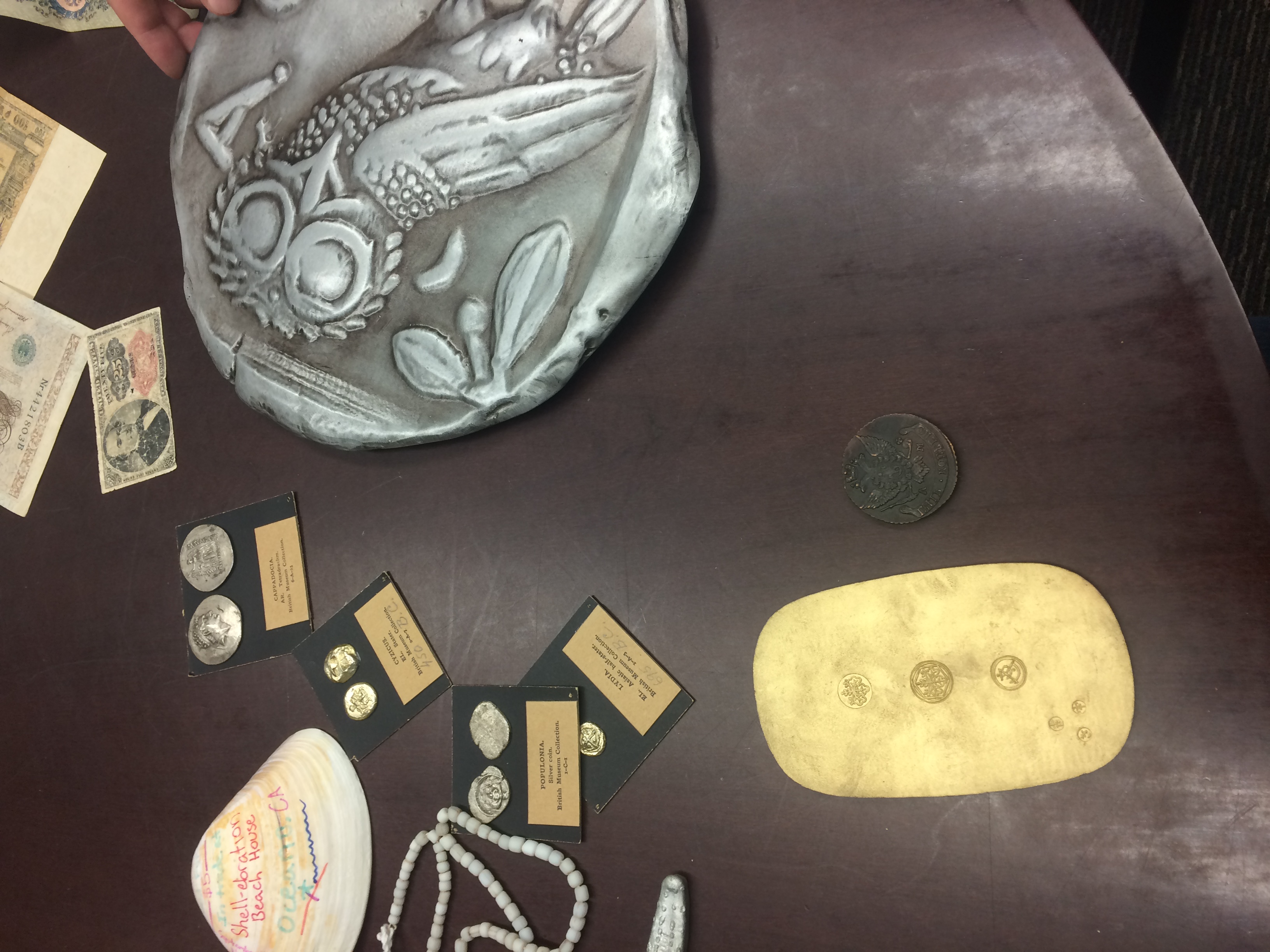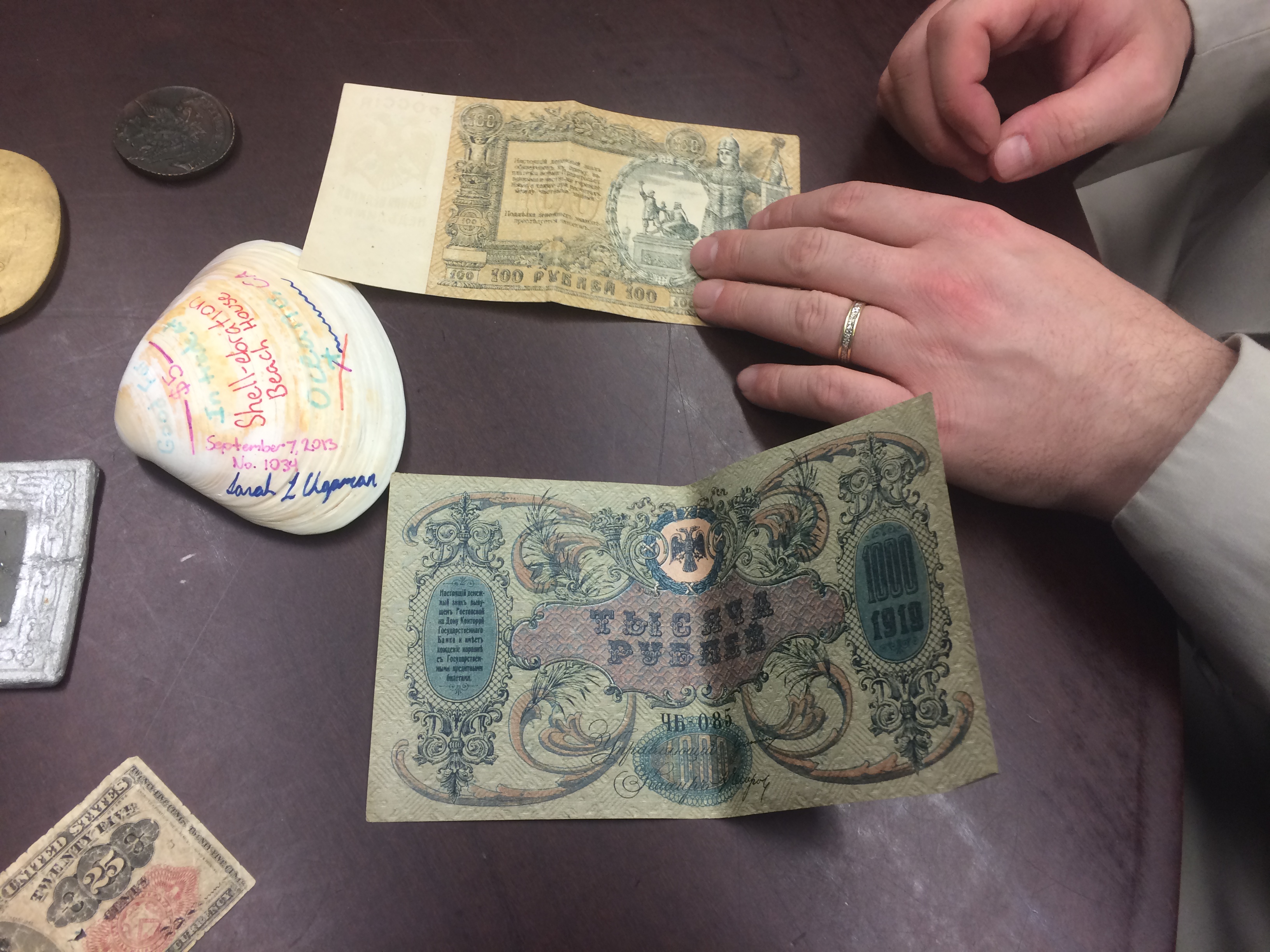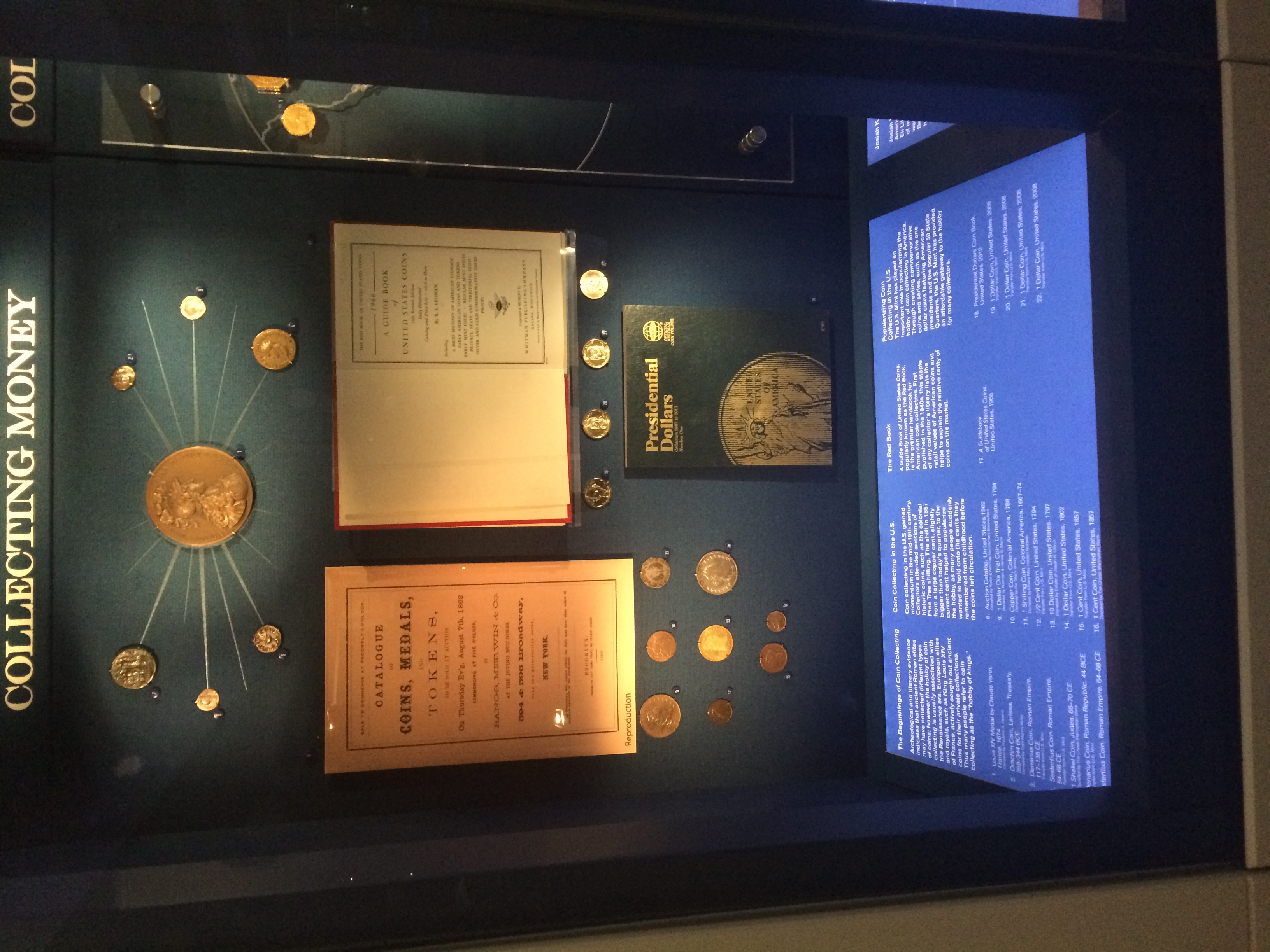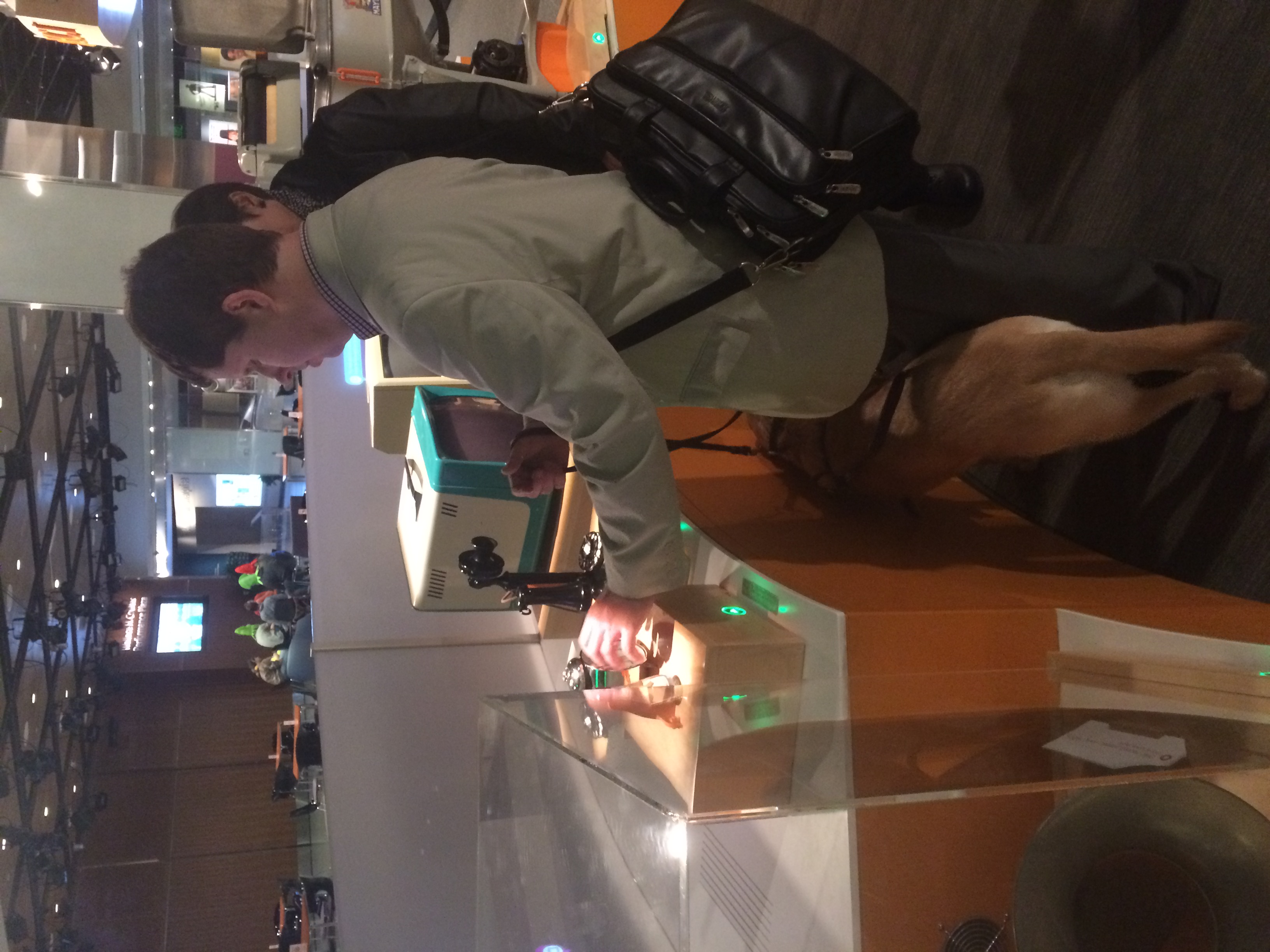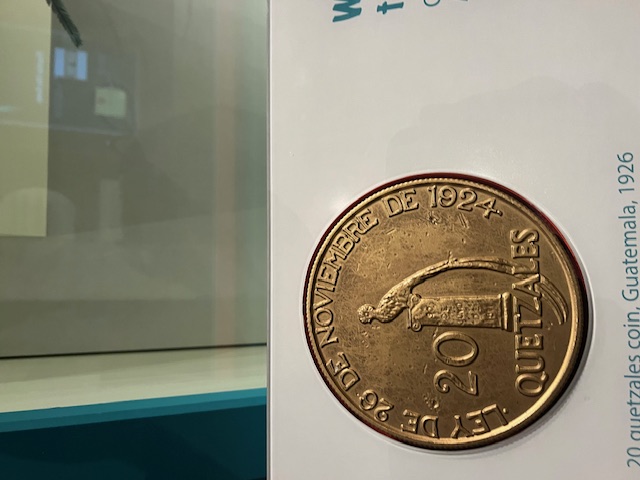The Smithsonian’s National Numismatic Collection opened to the public last year. The National Numismatic Collection, which houses 1.6 million numismatic artifacts, is also available for researchers by appointment. You can imagine how excited I was when I found out that my next trip was to Washington DC There was even more to the excitement, I used to live there for almost ten years, and I’m always happy to be back for no matter how short of a time. But for now, let’s talk numismatics. At least for the most part.
In 2015, I met Ellen Feingold from the Smithsonian who made a presentation about the exhibit, so I called her if they could arrange a hands on tour for me. She immediately put me in touch with Kate Steir, who promptly organized much more than I could have ever wished for.
Given the timing of my trip, Kate wasn’t available to give me a tour, so her colleague, Emily Pearce Seigerman told us all about the exhibit, and gave us a behind the scenes introduction to an educational program in the storage vault. Well, us, because I brought a friend with me.
Since this is a rambling blog anyway, he is certainly worth a few words. I met Brandon online a couple of years ago when I joined the World Internet Numismatic Society, at that time he was the news letter editor, which I have inherited from him as of this year. Over the last few months, we exchanged coins and ideas with Brandon, ok, let’s be honest, mostly he sent me great stuff. Since I knew that he lived in the area, I thought it would be a great idea to meet in person for the first time, and what else to do than visit a numismatic exhibit. It is because of Brandon that this time I have decent pictures to post.
Emily had a number of things lined up for us. It was interesting to find out that it is a hands-on exhibit, offered to the public on designated days, and it is meant to be touched.
As a collector, I think I know enough about money, so it was even more impressive that I have not touched any of the objects before which Emily showed me.
We started with replicas of old Greek coins, then an enlarged version of the Athenian owl. This was fantastic, I had no idea what it looks like or feels like, this replica gave me a great idea. It was about as big as a plate, so even the small details can be felt.
Another similar experience was a 3d printed version of a Euro coin, much larger than the original, about 5 inches diameter. It was interesting to feel a coin, currently in use and have a sense of what it is like. The coin itself is hard to figure out, I can recognize the number one on it, but the rest is too small to touch.
I also got to touch a few bank notes from the early XX. Century, from Russia and Germany. I have not felt anything like this before. I stopped collecting paper currency, because it wasn’t too meaningful to me. I’m able to tell Euros or Dollars apart, even Pengos or Forints, but when I touch a random note I have no idea what it is. However, if I would have touched the notes they had for me at the Smithsonian, maybe I would have stayed longer in currency collecting. Definitely, currency is harder to recognize than coins, but it is interesting how the different notes vary in size and material.
We also had a conversation about making coin exhibits available to blind people, what it means, how doable it is, what it takes, etc. I think there is a need for allowing people to feel numismatic artifacts, maybe for some it could be an inspiration to start collecting coins, for others, a good way to learn about a different aspect of culture and history.
After I had a chance to go through the money exhibit, we went to another room which was full of numismatic books and magazines. It was both exciting and humbling. What did I get out of it? If I say nothing or not much that is farthest from the truth, even though I didn’t really get to flip through the books. I took one book and scanned a page with my phone, I got a very readable page. But the most important thing here was just to be able to touch all these books. The smell and touch of books is always exciting to me. And the fact that this is very achievable to just ask for an appointment, come in, and be able to scan and read any of the books. Of course, it would take me much much longer just to read a few articles, but I wouldn’t mind to spend a few afternoons there. There are many books in other languages, which may even help me with my current research.
After the tour, I was also offered a personal tour of the History Museum. We had about an hour, so it is a very short time to cover everything, I should definitely go back. Of course, we went through the public numismatic exhibit. There wasn’t anything to touch there, all items were behind glass. However, it is definitely understandable, the value of most objects are way too high to handle them as originals. Among the many things I was amazed to learn that they had a 1974 aluminum Cent and a 1913 Nickel.
And though not related to numismatics, working with technology, I can’t not talk about it here, I got to touch a very old Apple computer. Not the first version, of course, though it has also been exhibited behind glass, but definitely one that was older than I can remember Apple computers.
Here I would like to thank the entire staff of the National Numismatic Collection to make this tour available, and for spending the time to show it to me and answer all the questions. You are doing an outstanding and unique work, please continue this program, it is truly special for blind people.
